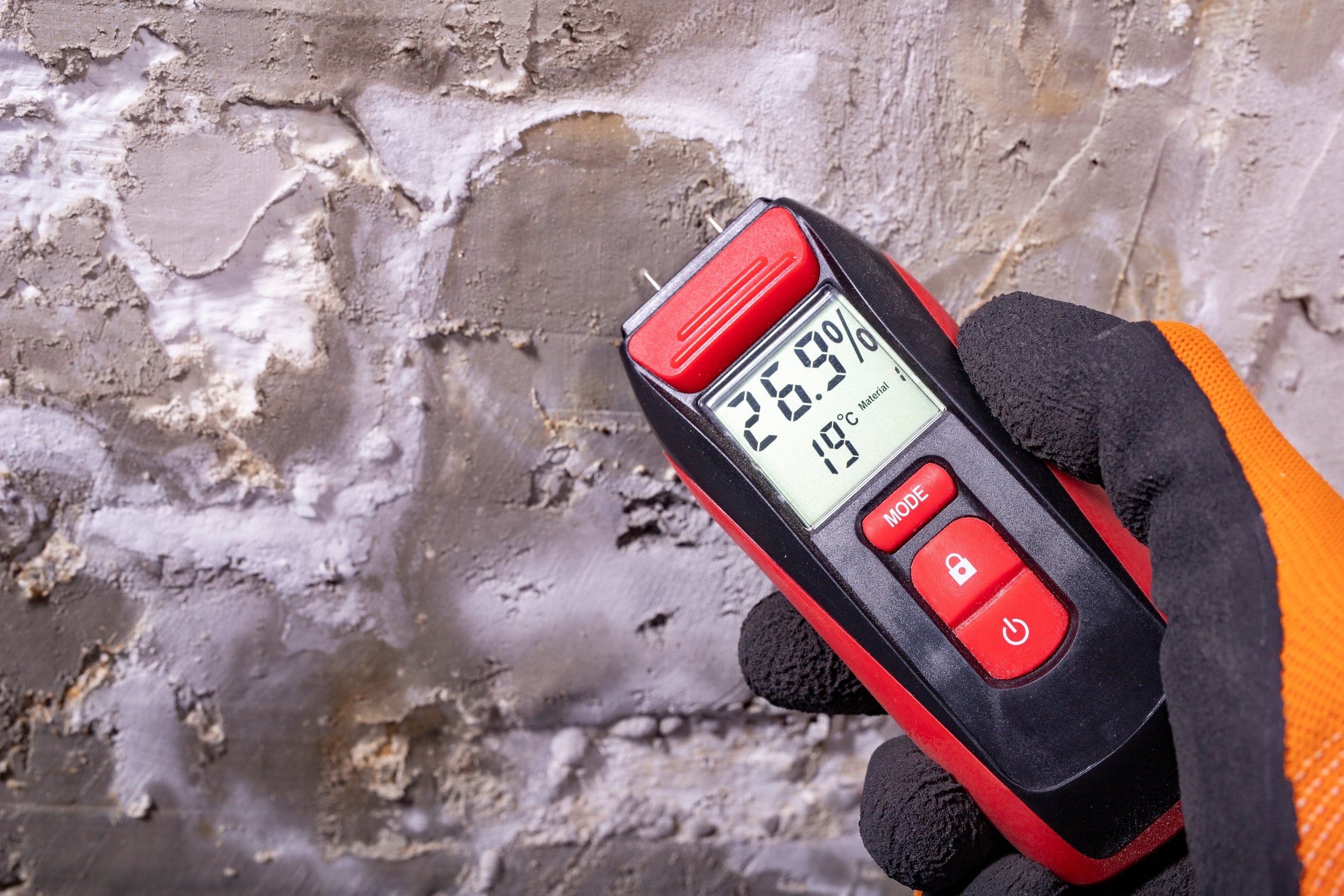What is Non-Destructive testing (NDT)?
Non-Destructive testing, it’s all in the name. NDT is a form of testing and inspecting a structure without causing any damage to it. In this blog, we will discuss what NDT is, explain the different types of testing we do and how NDT could benefit you.
What is non-destructive testing?
Non-Destructive Testing (NDT) is a method used in engineering to evaluate the properties of a material, component, or system without causing damage or altering its original state. Common goals of NDT is to:
Find the locations of reinforcement and services to safely cut through concrete
Determine the quality of the material or detect any cracks, voids, or changes in width/depth
Find the locations where water is ingressing a structure
Check the quality of connections. (although this is more related to steel and welding)
In simple terms, NDT is like going to the doctor for a check-up without having to undergo any invasive procedures. The doctor can still gather important information about your health without damaging your body. This is why you may hear people often refer to a range of different technologies as scanning or Xray-ing the concrete. Similarly, NDT can allow engineers to gather information about the condition of a material without damaging it.
NDT is not only used in engineering, but in a variety of other industries. There are many different types of NDT to discuss but in this blog post we are going to cover types that are mainly used in concrete construction. Some different types of NDT technology we will cover are:
GPR (ground penetrating radar)
UPE (ultrasonic pulse echo)
Schmidt hammer
Eddy current
UPV (ultrasonic pulse velocity)
Moisture meter
Thermal camera
Now that we know the names of the most common technologies used in Non-Destructive Testing, let us break them down.
Ground Penetrating Radar (GPR)
Ground Penetrating Radar (GPR) is a tool that uses high-frequency radio waves to conduct a concrete scan. This scan produces images of what's in a concrete or screed element. It does this by sending a signal into the ground and measuring how long it takes to bounce back. GPR can detect objects like pipes, cables and reinforcement. Think of it as taking an X-ray of concrete or screed without causing any destruction.
GPR is the most common form of NDT used by our engineers to conduct concrete scans. This is so that our engineers can test the condition and thickness of the concrete and locate underground utilities. GPR can also be used in conjunction with other NDT equipment to detect subsurface defects and voids. GPR is more commonly used as it can investigate depths of several metres or more without direct access to the surface. The most common GPR devices are handheld which can only scan much shallower depths. A downfall of GPR is that it generally provides lower resolution images than others, with features of a few centimetres or larger visible.
Schmidt Hammer
A Schmidt hammer is a handheld device about the size of a water bottle. A Schmidt hammer is used in engineering to estimate the compressive strength of concrete and other materials.
The Schmidt hammer works by measuring the rebound of a spring-loaded mass that impacts the surface of the material being tested. The hammer has a small plunger that is pressed against the surface of the material, and then released to strike the surface. The rebound of the plunger is measured by a device in the hammer. This measurement is used to calculate the compressive strength of the material.
The compressive strength of concrete is an important property that is used to determine the load-bearing capacity of structures. By using a Schmidt hammer, engineers can quickly and easily estimate the compressive strength of concrete without the need for laboratory testing.
As well as concrete, Schmidt hammers can be used to estimate the compressive strength of other materials, such as rock, brick, and masonry. They are portable and easy to use. This makes them a convenient tool for testing and quality control in projects.
Example of a Schmidt Hammer testing the concrete strength before conducting renovations of a building.
Adobe Images: godshutter
Ultrasonic Pulse-Echo (UPE)
Ultrasonic pulse-echo (UPE) is another non-destructive testing (NDT) technique. Like GPR, it is commonly used to test properties and integrity of materials and structures. It involves the use of high-frequency sound waves to detect and assess internal defects or flaws in a material, such as cracks, voids, or corrosion.
In Ultrasonic pulse-echo testing, the equipment used is called an ultrasonic transducer. This generates sound waves that are directed towards the material in question. When the sound waves encounter a boundary or defect in the material, part of the wave is reflected back to the transducer. The rest continues to pass through the material. By measuring the time it takes for the reflected wave to return to the transducer, and analysing the characteristics of the returned signal, important information about the material or structure can be obtained. This includes the thickness, density, and presence of defects or flaws.
Unlike GPR, Ultrasonic pulse-echo produces much higher resolution images of what's below the area in question. UPE is usually used for shallow-reach concrete scans of generally up to a few centimetres limiting its ability to scan lower depths. This is typically why GPR is more commonly used.
Eddy Current
Eddy current is just another type of non-destructive testing. It is a method used to check metals for defects without damaging them. It works by using a special probe that generates a magnetic field and detects changes in the magnetic field caused by the metal being tested.
When the probe moves over the metal surface, it creates a small electric current in the metal, which generates its own magnetic field. The probe can detect changes in this magnetic field caused by cracks, corrosion, or other defects in the metal.
Eddy current testing is useful because it can quickly check metals for defects, without needing to cut or damage them. It is often used in manufacturing and quality control to make sure products are safe and reliable.
Moisture Meter
A moisture meter is a device used to measure the moisture content in various materials such as wood, plaster and concrete. It is a handheld tool that uses electrical resistance or electromagnetic waves to measure the amount of moisture in the material.
There are 2 different ways that we use a moisture meter:
Setting the device to different modes that have preset parameters for a specific material such as timber, tiles, concrete etc.
Used to conduct 'relative measurements' where the device gives a 'higher or lower' reading relative to another location.
Our Engineers often use a moisture meter when conducting an inspection on residential or commercial buildings where it is suspected that there is a moisture buildup contributing to a reported problem. Some of the most common issues that we identify using moisture meters are water leaks and plumbing problems.
A moisture meter reading of a concrete surface.
Adobe images: Piotr
Ultrasonic Pulse Velocity (UPV)
Ultrasonic pulse velocity (UPV), like the others we have discussed, is another form of NDT. UPV is a technique used to test the quality of concrete or other construction materials.
The method involves sending high-frequency sound waves through the material using a specialised device called an ultrasonic pulse velocity tester. The device generates a pulse of sound waves that travel through the material and are detected by a receiver on the other side. The time it takes for the sound waves to travel through the material can be used to calculate the material's density and integrity. The faster the sound waves travel through the material, the denser and more uniform the material is likely to be. Slower sound wave velocities can indicate cracks or other defects in the material.
A downside to using UPV is that to do this type of non-destructive testing, it requires access to both sides of the material being tested. This can be difficult or impossible in some situations, for example when trying to conduct a concrete scan of pavement. In situations like these, some of the other forms of NDT would be a better option.
Another use of UPV equipment is to measure the depth of fine cracks, which could allow water to penetrate concrete and cause reinforcement to rust. The pulses in this case travel along the surface. The deeper the crack, the longer it takes to get from the sender to the receiver. The time difference is then used to estimate the depth.
Thermal Camera
A thermal camera, also known as an infrared camera or thermographic camera, is a device that is used to detect and visualise the heat patterns and temperature distribution of objects and surfaces. It works by detecting the thermal radiation emitted by the object or surface and then converting it into a visible image. The camera can then display the image on a screen, showing the temperature distribution in different colours. Hotter areas appear as brighter colours and cooler areas appear as darker colours.
The most common use for a thermal camera by our engineers is to detect areas of moisture intrusion. An issue you could face with using a thermal camera is; interpreting the results can be difficult if you are not an experienced technician. Interpreting the results when used to find cold liquids is a lot more difficult than hot liquids when looking for holes or gaps in a material that are supposed to hold a liquid. Having a skilled technician will help eliminate any false readings and determine if there are any issues present after thermal camera imaging.
Example of a Thermal Camera testing a surface.
Adobe Images: Kadmy
Deciding which NDT tool is right for you
Now that we have discussed some of the most common pieces of equipment that we use in non-destructive testing, how do you know which one is right for you? Everyone's situation is different and deciding which testing method is right would depend on what needs testing. Our engineers can assist you in deciding which one is right for you. Contact us today to discuss your needs and see how we can help you.





